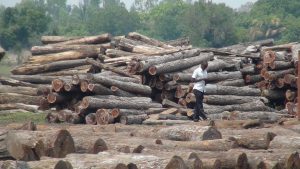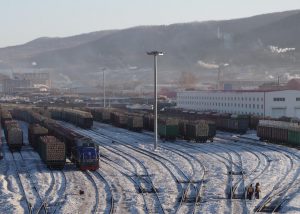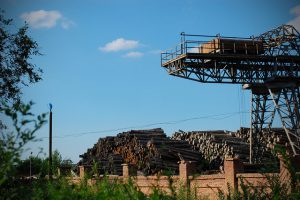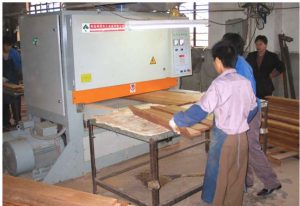The proportion of China’s timber imports that are at high risk of being illegal fell from 26% in 2000, to 17% in 2013. This can in part be attributed to notable reform efforts by the Chinese government, including proactive engagement with other countries and the private sector.
However, over the same period, the actual volume of illegal imports doubled – from 17 million cubic metersin 2000 to 35 million cubicmeters in 2013. This is due to the growth in total imports over the past 14 years and illustrates the challenges China faces in trying to tackle the trade in illegal timber.
Driven in part by booming construction and industry, Chinese demand for wood-based products more than doubled over the last decade, reaching nearly half a billion cubic meters in 2012. Imports have become an increasingly important way of meeting this demand – making up nearly half the total timber supply in 2012.
Much of the timber that is imported is for the domestic market, but China is also a major processing hub, and exports of wood-based products have grown rapidly: from 30 million cubic meters in 2003 to 81 million cubic meters in 2012. The level of illegality in imports directly affects the likely legality of China’s exported timber products.
This illustrates the pivotal role China plays in the global timber industry, and shows why progress made by the Chinese government and private sector to tackle the trade in illegal wood-based products will significantly affect the success or failure of such efforts at the global level.
Russia and Indonesia account for the bulk of China’s high-risk wood-based product imports, while its main export markets are the US, EU, the Middle East, EU and Japan.
Since 2000 both the EU and US have introduced regulations designed to prevent import of illegal timber. This might be expected to have led China to divert high-risk exports elsewhere but the data shows little evidence of a shift towards less regulated markets.
This is positive though also raises questions about whether the enforcement of those regulations is sufficiently rigorous.
China’s market for illegal wood
Meanwhile, significant discrepancies in trade data suggest that China continues to be an important market for illegal wood-based products, particularly high-value hardwoods from Southeast Asia and Africa.
Since 2006, there have been significant discrepancies in data for logs imported into China from Mozambique, Benin, The Gambia and Ghana, thought to be partly due to the trade in high-value hardwoods. In the case of all these countries, China reports significantly higher volumes of imports than they report as exports.
Since an earlier assessment by Chatham House in 2010, China has taken a number of important steps to improve international trade cooperation, both via government-to-government engagement, and by promoting cooperation between businesses in China and timber-producing countries.
However, despite this progress in international engagement, no formalised commitments have been made. An approach based on voluntary commitments and guidelines will inevitably have a limited impact.
China’s opportunity to act
Efforts by the government and industry associations to promote sustainability certification among Chinese companies have seen good results. However, China still lags behind other major timber-importing countries, with fewer than two companies with FSC Chain of Custody certification per million people in 2012.
China has drafted a national timber legality verification system but has no law in place to control the import of illegal wood-based products. And although cooperation and dialogue between departments is good, the government is yet to develop an overarching national action plan to tackle the issue.
As domestic demand to support China’s construction industry and infrastructure development, and international demand for China’s exports of plywood, wood furniture, flooring and ornamental products continue to grow, it is crucial that the government does more to address illegal timber trade.
First and foremost, it should implement binding regulations and stringent controls on the import and export of such products.
The draft national timber legality verification system should be further developed and refined, with more analysis and consultation needed to assess the feasibility and impact of the scheme.
The government should strengthen its own procurement policy, and expand training for companies on how to avoid importing illegal timber, as well as on the market regulations and legality requirements in consumer countries.
Work to promote sustainable forest products trade and investment should be continued, and awareness-raising initiatives should be extended to the general public to increase demand for verified legal products among Chinese consumers.
China has the opportunity to make a huge difference to global efforts to reduce the trade in illegal timber, and thus slow tropical deforestation, which contributes to climate change.
Reforms and associated progress over the last decade suggest the will is there. But in the context of soaring demand, a big increase in effort and coordination, and a shift away from voluntary towards mandatory policies, will be needed to drive transformative results.
Read Chatham House’s latest report ‘Trade in Illegal Timber: The Response in China‘ to find out more







